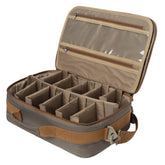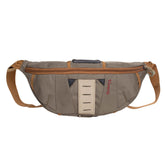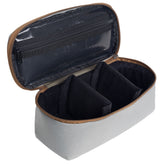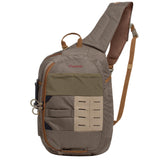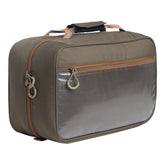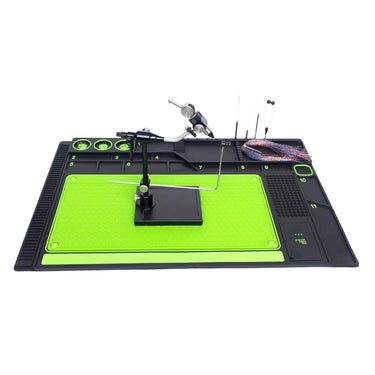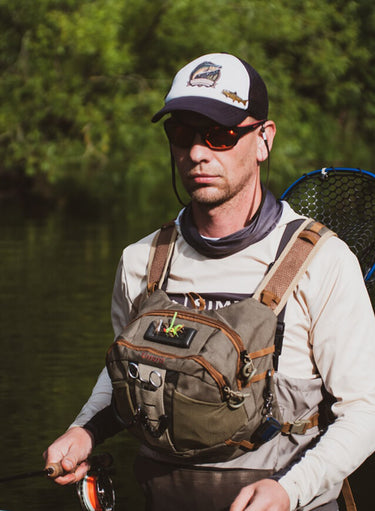Fishing Packs: The Ultimate Guide to Insulated, Fly, Kayak, and Ice Variants
When it comes to fishing, having the right gear can significantly enhance the experience, and that starts with a quality fishing pack. An insulated fishing pack can keep your bait and drinks at the ideal temperature, ensuring that you stay refreshed and ready to cast. Each type of fishing—be it fly fishing, kayak fishing, or even ice fishing—requires a specialized pack tailored to its unique demands.

For example, a fly fishing pack allows easy access to your tackle while keeping you organized. On the other hand, a kayak fishing pack is designed to fit snugly while leaving room for your paddling space. Each variation factors in convenience, storage space, and the specific needs of the fisherman, making it crucial to choose the right one for your preferred fishing style.
Understanding Fishing Packs

Fishing packs are essential for organizing and transporting gear for various fishing trips. Selecting the right pack involves considering materials and durability, as well as understanding the different types available based on specific fishing needs.
Materials and Durability
When choosing a fishing pack, the materials used play a crucial role in its longevity and performance. I prefer packs made from high-denier nylon or polyester due to their strength and resistance to wear and tear.
Waterproof materials are vital for protecting gear from moisture, especially during unexpected rain or splashes. Some packs feature water-resistant zippers and seams to enhance this protection. Additionally, reinforced sections in high-wear areas help improve durability, ensuring the pack withstands rough handling while carrying fishing gear.
Types of Fishing Packs
There are various types of fishing packs designed for specific fishing activities. I find that an Insulated fishing pack is perfect for keeping bait and perishable items fresh. Its insulation prevents temperature fluctuations that could spoil my catch.
Fly fishing packs often have specialized compartments for storing flies and tools, allowing for easy access while on the water. In contrast, kayak fishing packs are designed to fit snugly in limited space, providing secure storage while balancing during paddling.
Lastly, ice fishing packs offer features like extra padding and thermal insulation to keep gear protected from freezing temperatures. Each type caters to unique fishing scenarios, ensuring I have the right gear for my needs.
Design and Functionality

In considering the design and functionality of fishing packs, I focus on how storage capacity and specialized features enhance the fishing experience. These elements are crucial for ensuring that my gear is organized, secure, and suited to the specific type of fishing I am doing.
Storage and Capacity
When selecting a fishing pack, I pay close attention to the storage options available. A good fishing pack should offer multiple compartments to keep tackle, bait, and other gear sorted.
-
Tackle Box Compatibility: I prefer packs with dedicated slots for tackle boxes. This organization saves time when I need to access my fishing tackle quickly.
-
Expandable Storage: Packs that have expandable features allow me to increase storage capacity as needed. This is particularly useful when I am planning for a longer fishing trip.
Additionally, I look for waterproof materials to protect my equipment from moisture. Ensuring that the insulation in my pack preserves bait or catches can be critical for success.
Specialized Features
Features that add to the functionality of fishing packs make them more versatile. One feature I appreciate is ventilation.
-
Breathable Fabrics: These help reduce moisture buildup inside the pack, especially during warm weather.
-
External Attachment Points: I value packs with loops and straps to secure additional gear like rod holders and landing nets. This keeps everything within reach yet organized.
Other features like hydration sleeves or insulated pockets for preserving catches are also significant. These thoughtful designs enhance the overall fishing experience by making my time on the water more efficient and enjoyable.
Fishing Pack Selection
When selecting a fishing pack, it's essential to consider the type of fishing you plan to do and the environmental conditions you'll encounter. Different fishing techniques, such as kayak fishing or saltwater fishing, may dictate specific features to look for in a pack.
Kayak Fishing Considerations
For kayak fishing, my primary focus is on stability and accessibility. A fishing pack should be compact and lightweight to prevent it from tipping the kayak. Look for packs designed specifically for kayak fishing, which often include features like:
- Straps and attachments for securing gear.
- Water-resistant materials to protect contents.
- A low-profile design to enhance balance.
In addition, I prefer packs with easy access pockets. This allows me to retrieve my tackle quickly while on the water. Packs with straps that can secure quickly to a kayak help prevent losing equipment during transport or when I need my hands free.
Saltwater Versus Freshwater Packs
Choosing between saltwater and freshwater packs involves assessing environmental factors. For saltwater fishing, packs must resist corrosion and moisture. Key features should include:
- Corrosion-resistant zippers and fittings.
- Durable, waterproof materials to withstand splashes and rain.
In contrast, freshwater fishing packs can prioritize comfort and versatility. I often choose packs with more organization options for unlimited gear, given the diverse tackle used. Look for compartments that hold various sizes of lures, bait, and tools, ensuring they remain organized during my trips.
Gear Management
Effective gear management is essential for a successful fishing adventure. Proper organization ensures I have everything I need, from fishing bait to lures and rods, which contributes to a more enjoyable and efficient experience.
Organizing Fishing Tackle and Bait
I prioritize organizing my tackle and bait to minimize time spent searching for gear. I use tackle boxes with adjustable compartments to separate different types of bait. For instance, I keep live bait, such as worms, in one section, and artificial lures in another.
Labeling each compartment helps me quickly identify my supplies. I also use waterproof bags for items that may get wet or damaged. For bulkier items, like larger lures, I use a designated tote to keep them accessible.
Fishing bait should be stored in cool, dry places. This keeps them fresh and ready for use. I often check my supplies before heading out on a trip to ensure I have everything ready.
Carrying Fishing Rods and Lures
Transporting fishing rods and lures properly is crucial for their longevity. I utilize rod holders or cases designed specifically for fishing gear. These provide protection and prevent rods from tangling during transport.
When selecting a bag for my lures, I prefer a compact, organized fishing pack with dedicated sections. This keeps lures visible and accessible, allowing for quick changes based on fishing conditions.
Adjusting the pack to distribute weight evenly also makes it easier to carry. I often pack lighter lures for easier casting and switch to heavier options as needed. This strategy keeps my tackle efficient and ready for any fishing adventure.



